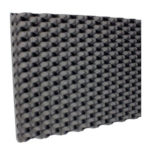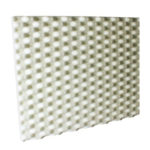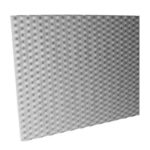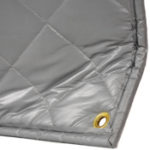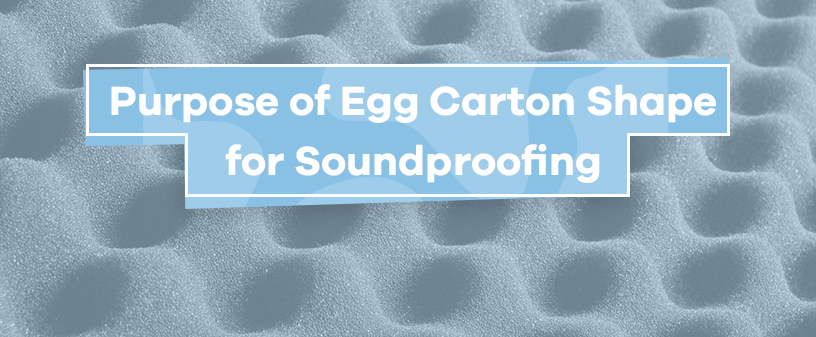
Most people searching for do-it-yourself soundproofing solutions have stumbled across the egg carton method. Yes, we’re talking about placing egg cartons across walls, ceilings and corners to block sound. While this method is far from effective, something can be said about the shapes of egg cartons and why foams and other materials are available in these configurations.
Do Egg Cartons Absorb Sound?
The short answer to this question is no, or at least not very well. Egg cartons are designed for one purpose — to protect eggs from breaking. Egg cartons are technically capable of reducing echos in a space, but not enough to notice a huge difference.
Egg cartons are constructed out of thin materials like recycled paper and cardboard. Both of these materials have weak sound-absorbing properties. Using egg cartons for soundproofing should only be done if you’re working on a tight budget or if you have an abundance of cartons at your disposal. You may notice a hint of sound absorption through the egg carton method, but you’ll still hear your neighbors.
If you’re wondering why egg cartons absorb sound slightly, it’s because they can create a barrier between the source of a sound and a nearby surface. Using a broken-down cardboard box will give you a similar effect. Egg cartons change the way sounds move, but they have trouble absorbing sounds sitting in the low-, middle- and high-frequency registers.
The Difference Between Egg Crates and Soundproofing Material
Some soundproofing foams and materials look like egg crates. They may appear the same size and shape, which makes egg crate soundproofing sound like a wonderful idea. However, foams are completely different and are made with unique raw materials.
Acoustic foams are engineered to block sound moving from room to room. Professionals and DIY fans should look to acoustic foam for the following advantages:
- Acoustic foam is dense: Soundwaves move across surfaces and within pockets until they disperse.
- The material is thicker: The mass of acoustic foams makes it harder for soundwaves to pass through.
- Soft surfaces prevent movement: Reverberations hit acoustic foam and stop rather than bouncing between walls.
Egg Crate-Shaped Materials and Noise Reduction
The shape of “egg carton” insulation allows the material to absorb sound better. How? The varying levels of curvature and dips grant products the ability to scatter sound waves throughout different frequencies. The soundproofing product deflects noise by reducing the number of sound reflections that occur within a given room.
Best Alternatives for the Egg Crate Method
Stocking up on egg cartons costs money. Saving up for more practical solutions from Soundproof Cow is a better way to see results. We have many products that offer a permanent or temporary fix:
- Soundproofing foam: Use polyurethane foam materials within bedrooms and living spaces to prevent the transfer of noise.
- Door seals and sweeps: Cover the spaces around doors where sound could enter or escape.
- Temporary barriers: Place an acoustic quilt on the opposite side of doors or over windows for peace and quiet.
Soundproof Your Room With the Right Materials
Whether you find yourself unable to sleep at night in your own home or suffering through the sound of noisy neighboring offices, soundproofing is the solution. To find out more about our products, we invite you to contact us at Soundproof Cow today!




